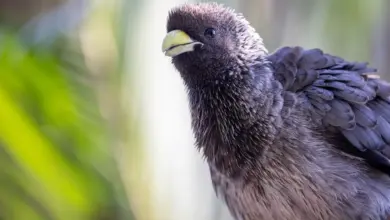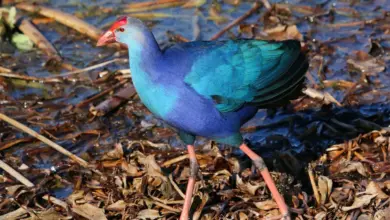Hooded Orioles, Icterus cucullatus
The Hooded Orioles, Icterus cucullatus, is a medium-sized New World oriole.
Description:
Adults have a pointed bill and white wing bars. The adult male has an orange head with black on the face and throat; they are black on the back, wings and tail, orange on the underparts.

The adult female is olive-green on the upper parts, yellowish on the breast and belly.
Distribution:
Their breeding habitat is open areas with trees, especially palms, across the southwestern United States and northern Mexico. The nest is a tightly woven pouch attached to the underside of a leaf or tree branch.
These birds migrate in flocks south to Mexico’s southwestern coast; they are permanent residents in Baja California Sur, the Mexican east coast, and Belize. Some may over-winter near feeders.
Diet / Feeding:
They forage in trees and shrubs, also feeding from flowers. Because it pierces the base of the flower, it does not assist in pollination. These birds mainly eat insects, nectar and fruit, and will also visit hummingbird feeders.
Further reading:
Book
- Pleasants, B. Y., and D. J. Albano. 2001. Hooded Oriole (Icterus cucullatus). In The Birds of North America, No. 568 (A. Poole and F. Gill, eds.). The Birds of North America, Inc., Philadelphia, PA.
Articles
- Boone JL, Lederle PE and Petersen SL. (1999). More additions to the birds of the Nevada Test Site. Western Birds. vol 30, no 4. p. 211-213.
- Brown BT and Trosset MW. (1989). Nesting-Habitat Relationships of Riparian Birds Along the Colorado River in Grand Canyon Arizona USA. Southwestern Naturalist. vol 34, no 2. p. 260-270.
- Calder WA, III. (1981). Diuresis on the Desert? Effects of Fruit Feeding and Nectar Feeding on the House Finch Carpodacus-Mexicanus and Other Species. Condor. vol 83, no 3. p. 267-268.
- Cruden RW and Hermann-Parker SM. (1977). Defense of Feeding Sites by Orioles and Hepatic Tanagers in Mexico. Auk. vol 94, no 3. p. 594-596.
- Ellison K and Brush T. (2004). Hooded oriole nest failure associated with a novel nest site. Western Birds. vol 35, no 2. p. 71-76.
- Fall BA. (1973). Noteworthy Bird Records from South Texas Kenedy County. Southwestern Naturalist. vol 18, no 2. p. 244-246.
- Fisk LH. (1973). Notes on Nectar Feeding by Orioles. Auk. vol 90, no 1. p. 208-209.
- Hardy JW. (1970). Duplex Nest Construction by Hooded Oriole Circumvents Cowbird Parasitism. Condor. vol 72, no 4.
- Leck C. (1974). Further Observations of Nectar Feeding by Orioles. Auk. vol 91, no 1. p. 162-163.
- Newman GA. (1974). Recent Bird Records from the Guadalupe Mountains Texas USA. Southwestern Naturalist. vol 19, no 1. p. 1-7.
- Powell BF and Steidl RJ. (2002). Habitat selection by riparian songbirds breeding in southern Arizona. Journal of Wildlife Management. vol 66, no 4. p. 1096-1103.
- Rasmussen JL and Sealy SG. (2006). Hosts feeding only Brown-headed Cowbird fledglings: where are the host fledglings?. Journal of Field Ornithology. vol 77, no 3. p. 269-279.
- Reddall J. (1977). Colorado USA Field Ornithologists Official Records Committee Report 1972 through 1975. Western Birds. vol 7, no 3.
- Sweet PR, Barrowclough GF, Klicka JT, Montanez-Godoy L and Escalante-Pliego P. (2001). Recolonization of the Flicker and other notes from Isla Guadalupe, Mexico. Western Birds. vol 32, no 1. p. 71-80.



